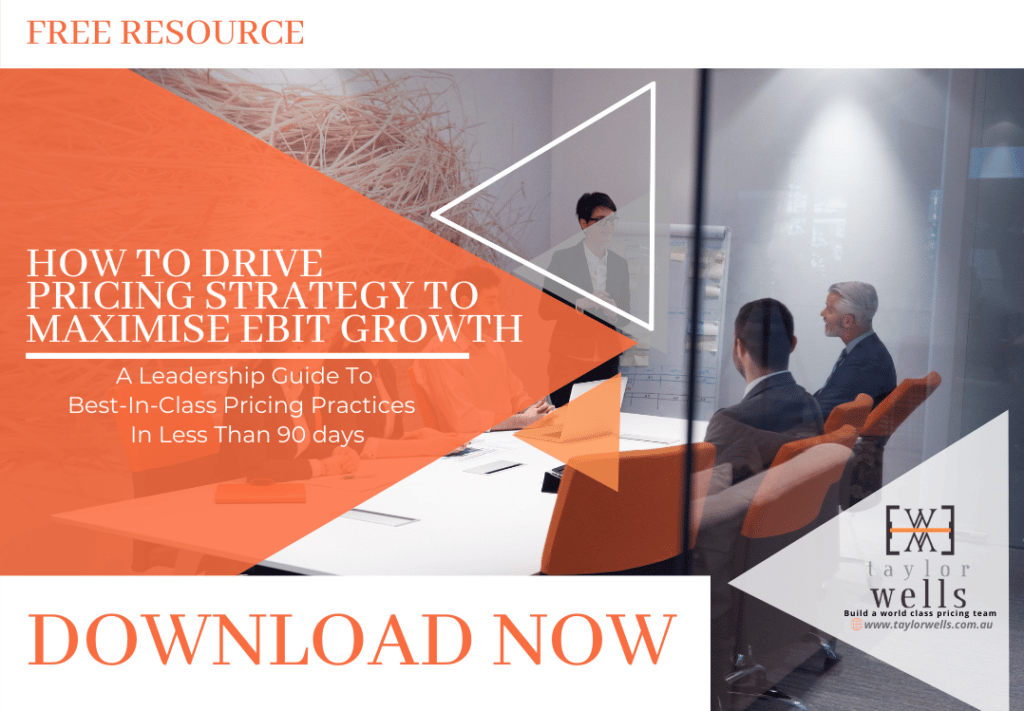
Consumption Based Pricing Model: Is Your Pricing Strategy The Reason Why Customers Have Stopped Using Your Products? 🥪
We now know that customers that use your products and services regularly are much more likely to buy and use your products and services again. How important is the consumption-based pricing model for businesses?
>Download Now: Free PDF How to Drive Pricing Strategy to Maximise EBIT Growth
What remains a murky area in pricing surprisingly is the link between pricing strategy and setting and customer consumption. Or the extent to which customers use products or services they’ve bought from you because of your pricing strategy.
But fortunately, some businesses are trying to fill this gap in knowledge.
For example, the newspaper industry in Australia shows a renewed push to understand the relationship between pricing and consumption patterns. Many newspapers here continue to trial new ways to price to consumers. To persuade them to pay directly for online services through subscription, membership, donations or per-article payments.
And efforts are paying off. The number of paid subscriptions to online news sites in Australia is increasingly more than you’d expect for a declining industry which is up to 20% in 2018 after hitting 13% in 2017, according to the Reuters Institute Digital News Report 2018.
In Greece, however, renewals were only 6% and the UK 7%. Only making the need for investigations into the psychology of pricing and consumption ever more urgent than they were before.
But pricing consumption models aren’t just important to B2C industries and firms, they’re important to all businesses. B2B included (even if they don’t realise it). In fact, any business wants to consider a consumption-based pricing model. Especially if they are in any way benefiting from repeat sales, positive word-of-mouth and satisfied customers.
After all, you won’t get more money from customers that don’t want to buy from you again. And from customers that don’t want to refer you because they don’t perceive there’s any value in using your products.
So, in this article, we’re going to talk about the consumption-based pricing model. Also, discuss some key psychology studies that prove how price and revenue management influence customer consumption.
We will argue that the type of pricing and revenue model you end up using can either maximise or reduce your revenue and margin.
We believe that the best consumption pricing model is one that focuses on what customers actually value and how they use your products and services.
By the end of this article, you’ll know if your pricing strategy is the reason why customers are not coming back to buy from you. And learn how to fix this pricing problem.
Case study on Consumption-Based Pricing Model
So, can the type of price and revenue model you choose discourage customers from using your products or services even if they’ve just paid for them?
The answer is yes.
Consider this real-life case study.
A major gym in Australia wanted to know if their pricing was stimulating enough demand for their services. And was also keen to trial different pricing and revenue models on their members.
Results
They found 3 distinct usage patterns resulting from 3 different price and revenue models tested.
The first group was charged a single annual payment for their membership to the gym. Members in this group used the club most frequently in the months immediately following payment. But by the final months, they used the gym 75% less than the first few months.
The second group was charged a quarterly payment for their membership to the gym. Like the first group, attendance was highest immediately following each payment, only to decline steadily until the next payment.
The final group was charged a monthly fee for their membership. And, unlike the other two groups, the usage pattern in this group was much smoother and steady throughout the year; as were the gym’s sales growth and forecasting.
Due to the success of the new revenue model, the gym also introduced tiered pricing to upgrade the right members to a premium membership. Within 3 months, they migrated over 26% of members in this group to a premium package. And had another 13% that said they were interested in trialling the premium service in the next 2-6 months.
Overall, the monthly payment fees, and tiered pricing delivered the best results for this gym financially. Moreover, customers continued to use the gym regularly, which meant ongoing and profitable annuity for the gym.
Discussion
Most executives know how pricing influences the demand for a product. But very few can explain how pricing impacts consumption or current and future usage patterns. In the study shared, the relationship between pricing and consumption lies at the core of the gym’s customer-focused pricing strategy. There was significant evidence to prove that the extent to which their customers used their gym services during a certain time period determined whether their members would buy from their product again and upgrade to a premium gym membership.
But if you are wondering what’s the psychology behind these results? The link between pricing and how people use products and services comes down to their perceptions of value. Members reported that they were more likely to go to the gym when they were aware of how much money they’d lose – or being out of pocket.
Members explained that when they saw how much their membership cost them each month, they felt like they should be getting more value from their membership. Some even said that the price reminded them of their original reasons for going to the gym. Such as strength, fitness, weight loss, socialising, etc.
The price of the membership, in other words, and the timing of payments reminded members of their financial loss or costs and the opportunity cost of missing out on their goals. Their perceptions of value then, motivated them to use the gym more rather than less. However, it was the consumption-based pricing model that elicited these responses in them.
Implications
- Pricing strategies that mask rather than highlight prices—like annual fees, licences, season tickets, advance purchases, and subscriptions — can reduce the pressure to consume the product in order to get the money’s worth and people start using your products less.
- Common pricing practices like advance sales, season tickets, and price bundling can boost profitable revenue growth in the short term. However, they can also mask the true cost of a product and reduce in turn the pressure to consume the product.
- The immediacy of payment can make customers use your product more after they have paid for the product. Because they increase attention to a product’s cost, boosting the likelihood of its consumption. Especially when payments occur at or near the time of consumption.
〉〉〉 Get Your FREE Pricing Audit 〉〉〉
Conclusion
How you set prices and manage revenues can make customers feel a strong sense of loss when they waste money or don’t make use of a valuable experience. Namely, when the customer feel like they’ve wasted their money, they feel this loss acutely and tend to use and value your products more; increasing in turn, usage patterns and purchase frequency.
The customer becomes much more aware of opportunity costs when they feel like they are letting good money go to waste. Or when they’re not getting the full value out of a product they believed would help them fix a significant problem.
Some pricing strategies take into consideration the perceived loss of a paid-for product. While most pricing strategies actively try to mask their product’s true price by adding fees and surcharges; rather than regularly reminding customers to use their product and services.
Teams who are not sure how to employ pricing tactics such as price bundling, advance sales, fees and charges without considering their impact on consumption may be trading off long-term customer retention for short-term boost sales if the price and value of products are not clearly understood and presented in the correct way to customers.
As competitive pressures intensify; and the cost of customer acquisition rises, the consumption-based pricing model will become increasingly important to cracking long-term profitability in both B2C and B2B firms. In fact, it’s difficult to think of any business in which consumption does not impact pricing strategy in some way.
Click here to download a whitepaper with key insights on driving your pricing strategy.
For a comprehensive view on maximising growth in your company,
Download a complimentary whitepaper on How To Drive Pricing Strategy To Maximise EBIT Growth.
Are you a business in need of help to align your pricing strategy, people and operations to deliver an immediate impact on profit?
If so, please call (+61) 2 9000 1115.
You can also email us at team@taylorwells.com.au if you have any further questions.
Make your pricing world-class!
Related Posts
Leave a Reply Cancel reply
Categories
- marketing strategy (26)
- Organisational Design (14)
- Podcast (114)
- Pricing Capability (87)
- Pricing Career Advice (10)
- Pricing Recruitment (19)
- Pricing Strategy (287)
- Pricing Team Skills (13)
- Pricing Teams & Culture (24)
- Pricing Transformation (47)
- Revenue Model (25)
- Sales Effectiveness (27)
- Talent Management (7)
- Technical Pricing Skills (35)







